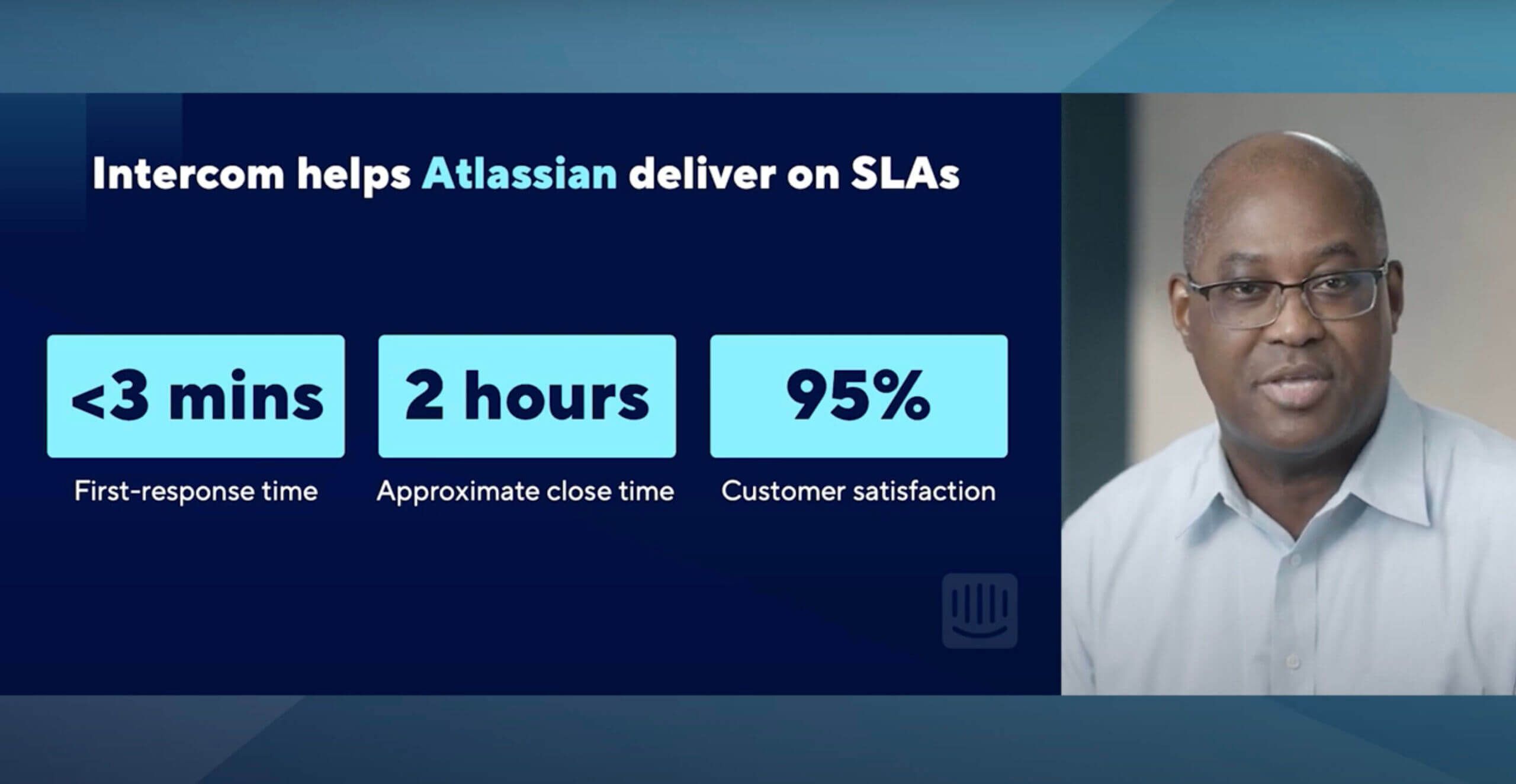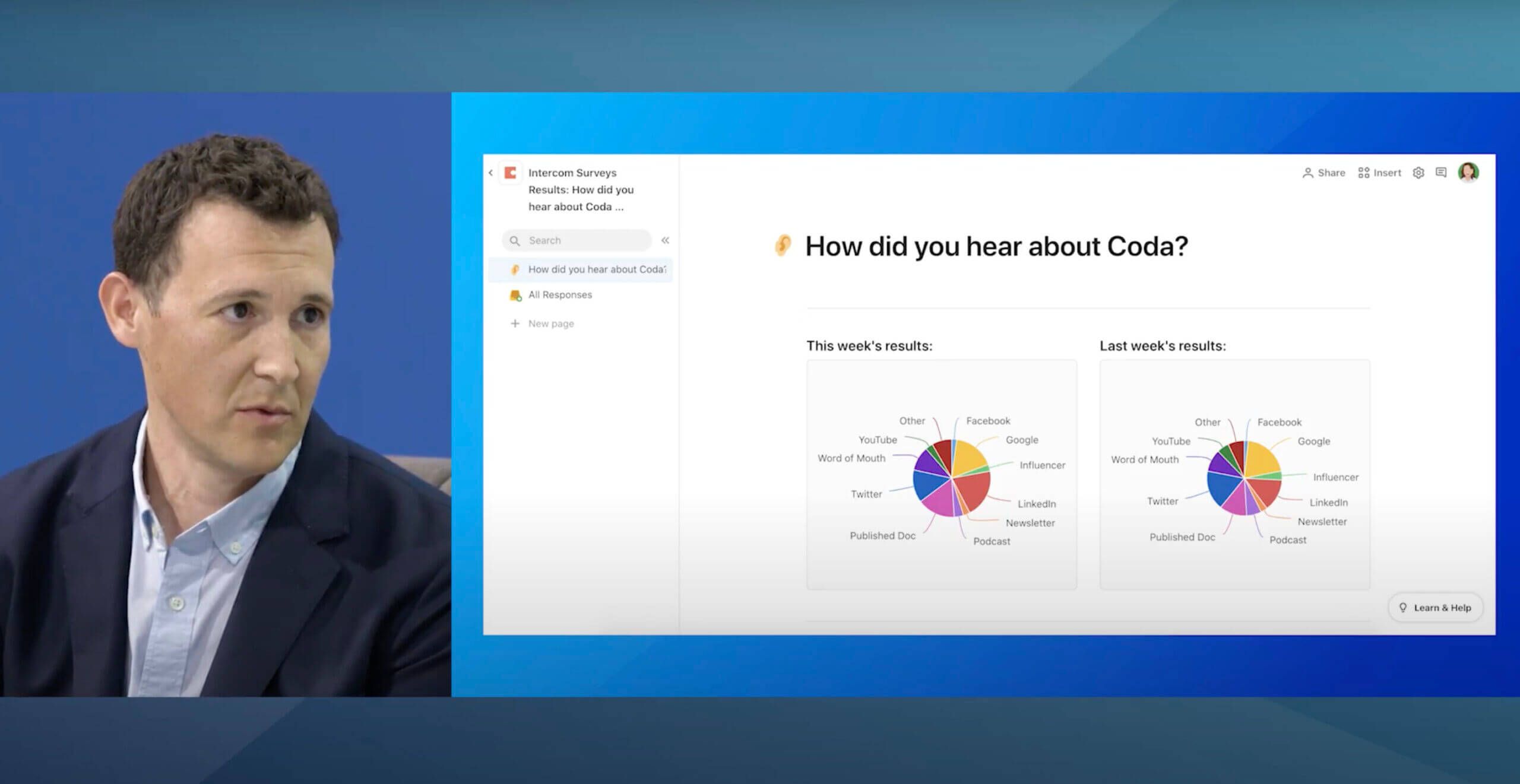
Atlassian and Coda on creating personalized customer experiences at scale
For fast-growing and enterprise organizations, the ability to personalize customer communication in a way that’s scalable is business critical. We know that customer expectations are higher than they’ve ever been, so the experiences you create for them are ultimately going to be what wins or loses their attention – and what moves the needle for your business.
In fact, studies show that not only do customers expect great experiences when interacting with companies, they’re willing to pay more for them. Tailored, in-context experiences have become table stakes, making the one-size-fits-all approach to customer communication a thing of the past.
With that in mind, the challenge businesses now face is striking the right balance between personalization and scale – which, historically, has been a tricky line to walk. The good news is that with the right platform powering your customer communications, one doesn’t need to happen at the expense of the other. Not only is it now possible, it’s easier than it’s ever been to do both. At our recent New at Intercom event, we invited two of our customers, Atlassian and Coda, to speak with our Chief Product Officer Paul Adams about how they’re creating great customer experiences while also driving growth across their businesses.
Check out Atlassian and Coda’s keynote sessions here, or read on for some highlights and takeaways.
Atlassian: Wayne Stewart, Head of CSS Cloud Growth – DevOps & IT

Atlassian boasts an impressive portfolio of products, including Trello, Opsgenie, Statuspage, and Jira, to name but a few. Wayne Stewart, Atlassian’s Head of CSS Cloud Growth – DevOps & IT, led the support team at incident management platform Opsgenie before it was acquired by Atlassian in 2018. Now, he oversees support for both Atlassian’s Opsgenie and Statuspage products.
“As Opsgenie joined a 7,000-strong company, the team was committed to ensuring their high support standards and customer experience weren’t compromised as they scaled to engage a customer base of now more than 200,000”
In the last four years, Wayne and his team have experienced first-hand what it’s like to transition from a small startup to an enterprise organization. As Opsgenie joined a 7,000-strong company, the team was committed to ensuring their high support standards and customer experience weren’t compromised as they scaled to engage a customer base of now more than 200,000. They needed to streamline their support processes so customers could get fast, personalized resolutions and the team could manage support volumes efficiently.
Here are some of their takeaways.
1. A great experience is something that stays with a customer – and often results in them staying with your company
Customer experiences can have a domino effect across a business. Great experiences result in increased customer satisfaction, which often correlates to bottom-line results like reduced churn and increased retention. Wayne’s team knows the impact an in-context, personalized customer experience can have all too well, which is why they hold such a high bar for success when it comes to engaging with their customers in order to drive growth across all areas of their business.
“One of the lessons we learned very early on is if you engage with the customers right as they’re asking that question … the experience that customer has stays with them”
“One of the lessons we learned very early on is if you engage with the customers right as they’re asking that question … the experience that customer has stays with them,” says Wayne. “It’s a great experience, they walk away with it, they remember it. They might end up remaining a customer with you for a long time, and we’ve seen that.”
2. Measurement matters
Before Opsgenie was acquired by Atlassian, Wayne and his team had ambitious targets for measuring the success of their support and the quality of their customer experience. This commitment to excellence and the stellar results the team achieved benefited them in more ways than one – not only were they able to keep customers happy and build lasting relationships with them, their success ultimately led to the company being acquired by Atlassian.
“We’ve observed that as a result of being so focused on this initial response time, we have an average close time of just about two hours for most of the cases that we open up with customers”
One of the team’s North Star metrics is first-response time, which they strive to keep under three minutes. This is an SLA they’ve maintained at Atlassian, leveraging powerful behind-the-scenes automation and inbox management capabilities to continue to hit that target at scale. The benefits of doing this compound, as Wayne explains, “We’ve observed that as a result of being so focused on this initial response time, we have an average close time of just about two hours for most of the cases that we open up with customers,” he says. “So the way that we are working with Intercom is making a difference in the service that we’re delivering to customers.” This is evident from the team’s results, with customer satisfaction scores consistently above 95%.

3. Having a flexible communications platform that can grow with your business is crucial
Throughout the team’s journey from small to enterprise company, Wayne notes that having a customer communications platform that was flexible enough to adapt to their changing business needs as they grew was pivotal. It enabled the team to make a seamless transition, as well as implement additional inbox management capabilities as needed to help them manage growing conversation volumes – all while ensuring world-class, personalized customer experiences.
“To date, we’ve been able to leverage Intercom for all the nuances to be able to deliver those high SLAs that I’ve been talking about, those great customer experiences”
As Atlassian continues to scale, Wayne’s vision for the future is to unlock even more opportunities using their customer communications platform to engage their growing customer base. “To date, we’ve been able to leverage Intercom for all the nuances to be able to deliver those high SLAs that I’ve been talking about, those great customer experiences,” he says. “So, what I’m looking for in the future is that you continue to grow with us.”
Check out the full Q&A with Wayne here.
Coda: Brian Lederman, Head of Sales, Support, and Success

All-in-one doc Coda – true to its description – is a horizontal product that offers a ton of different solutions for different people. For that very reason, the team focuses heavily on personalizing communications to their growing customer base to give tailored experiences to each user.
“The team wants customer support and the customer experience to be key differentiators for their business. In fact, it’s one of their core operating principles”
At New at Intercom, Brian Lederman, who heads up sales, support, and success at Coda, shared that the team wants customer support and the customer experience to be key differentiators for their business. In fact, it’s one of their core operating principles. Intercom powers Coda’s customer communications across the entire journey, empowering them to create stand-out experiences for their customers and build strong, lasting relationships. Having experienced a huge wave of growth in recent years, the team’s use of Intercom has evolved significantly alongside the business to ensure they can continue providing the highly personalized experiences their customers expect – at scale.
Here are some of their takeaways.
1. The one-size-fits-all approach doesn’t work – context is key
“One of the things about having a very horizontal product is that it’s difficult to provide a very contextual experience for each individual user,” says Brian, highlighting the importance of gaining a deep knowledge of your customers in order to provide the best possible experience for them at every stage of their journey.
“Intercom really helps us understand our user personas and where they are in their journey with Coda so that we can continue to provide a really rich and personal experience based on who they are”
“Intercom really helps us understand our user personas and where they are in their journey with Coda so that we can continue to provide a really rich and personal experience based on who they are … and where they are in their experience with our product.”
2. In-the-moment feedback is a game changer
Being able to collect feedback from customers at the precise moment they’re experiencing something is an important step in gaining a deep understanding of their journey and experience using your product. Coda uses Intercom Surveys (an exciting new feature we announced at New at Intercom) during the onboarding process and to measure NPS in order to contextualize their customers’ experiences based on their feedback.
“We really want to provide a more contextualized and personal experience based on user feedback, so once we capture the information, we can then synthesize it for our teams and use that data to then power downstream behavior. As an example, if we have a survey result that maybe was a bit of a detractor, somebody who was having a negative or not-so-great experience on their onboarding journey with Coda, we can then take that information and get it in the hands of a CSM or someone on the support side to really step in at the right moment. The idea that we can provide the right level of interaction to meet the customer in their moment of need and turn that moment of frustration into a moment of light has been really powerful. We have very happy customers as well. We want to take those moments of delight and really amplify it.”
3. Building a robust, integrated tech stack is critical for success
In fast-growing and large businesses, it’s important for teams to be able to use tools that set them up for success, without sacrificing data integrity. Brian explains that at Coda, they’ve heavily integrated Intercom with the other tools they use, like their CRM – and, of course, their own product – to ensure that they can collaborate seamlessly with other teams while maintaining a single source of truth for customer communication.

Having the ability to integrate with the tools they need to adopt as they scale is crucial for the team as they look to the future. “We need to continue to deliver that same level of customer experience at scale. We’re growing incredibly rapidly and we need a tool to really be nimble and agile and grow with us,” says Brian. “This year is a really important year for us, as well, to open up more omnichannel experiences. And so we’re looking forward to partnering with the Intercom team to provide more ways for customers to communicate with us.”
Check out our full conversation with Brian here.
Want to see what else went down at New at Intercom? Catch up on the full recording to see our customer sessions, product demos, and more.







